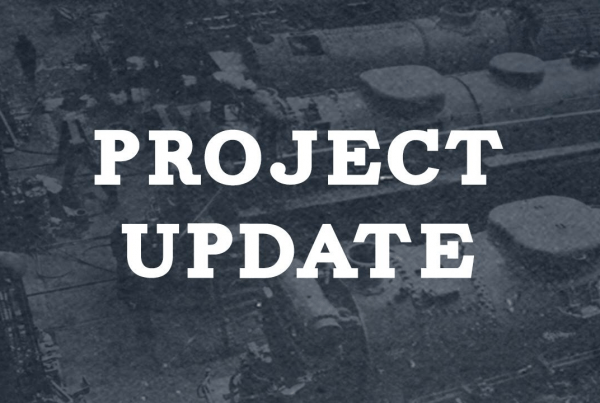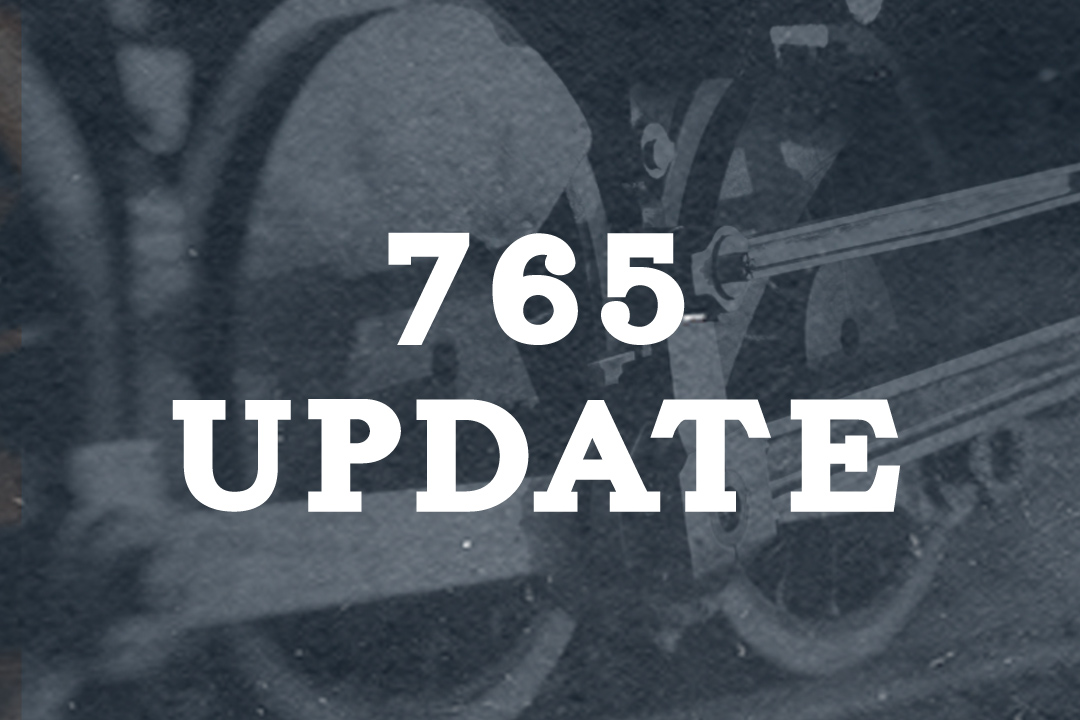Submitted by Steve Winicker.
LAST WEEKENDS SHOP ACTIVITY
Last week Mr. Nitza and Mr. Jaress spent some time working on the headlights for the 1231 and the 765 ran trips at CVSR. Thanks to all who could help run the trips, sell souvenirs and provide support for the operations. It appears all went well and a good time was had by most. (I did hear some unhappy children now and then). A pretty good course was held on boiler treatment early Friday afternoon. It gave some background on the methods, processes and reasons for feedwater treatment.
Mechanical Note
I note that folks have felt the need not to shovel and use the stoker when the engine is sitting for long periods of time. While I would prefer more shoveling and less running of the stoker engine, we do have the means to do this and provide lubrication to the stoker but only if it is maintained. If you feel the need to use the stoker over long periods where the engine is simply sitting you need to service it regularly. This means filling the drip cups at the front of the tender every few hours, checking the oil in the crankcase at the start of the shift and most importantly draining and refilling the hydrostatic lubricator (you can add cleaning up the mess if you spill oil) every hour or so. On the road, the stoker is lubricated by the automatic oilers powered from the rod motion sitting still it gets no such oil source. The take home message is either maintain it or don’t use it. If you do not know what needs service and which oil goes where you can either ask or use the shovel. Another factor is that if you are trying to clean up a road fire, and you should be, the stoker does not work evenly which is more apparent without the shaking and heavy exhaust to move coal around on the fire bed. Supplemental shoveling and shaking of grates is needed.
UPCOMING ACTIVITIES
Next weekend will be a duplicate activity. If possible, we need some help on Friday morning cleaning the engine. Last week put a lot of blow down sludge on the jacket which needs to get cleaned up. Hopefully we can get a start by midmorning on getting it clean. We have a trip Friday evening, so this work needs to be completed as early in the day as possible
SAFETY SENSE
We use compressed gases for a variety of tasks at our facility. We use compressed gases and the cylinders that store them for welding, powering industrial trucks and a variety of less common things. Many of us use them at home for fueling a grill.
The convenience of compressed gas doesn’t come without a price though . . . we need to store, handle and use them properly or the consequences can be devastating.The following are some tips for compressed gas cylinder storage.
- · Store cylinders with their cylinder valves in the closed position.
- · Securely attach cylinder valve caps.
- · Separate cylinders according to their contents. Place oxygen cylinders at least 20 feet from any cylinders containing a flammable gas or combustible materials. A option is to separate cylinders by a noncombustible barrier at least five-feet high and with a fire-resistant rating of at least 30 minutes.
- · Identify empty cylinders, and store empty cylinders separate from full cylinders.
- · Secure all cylinders while in storage and in use.
- · Ventilate all cylinder storage.
- · Keep cylinder storage away from fire and potential electrical hazards.
- · Ensure all cylinders are labeled to identify their contents. Do not trust the cylinder color code as identification method for cylinder content.
- · Return any cylinder to the supplier if the label does not identify contents.
- · Store acetylene cylinders upright.
- · Avoid dropping or striking cylinders.
High pressure gas cylinders are extremely useful however they can be extremely dangerous if not stored and handled properly.


